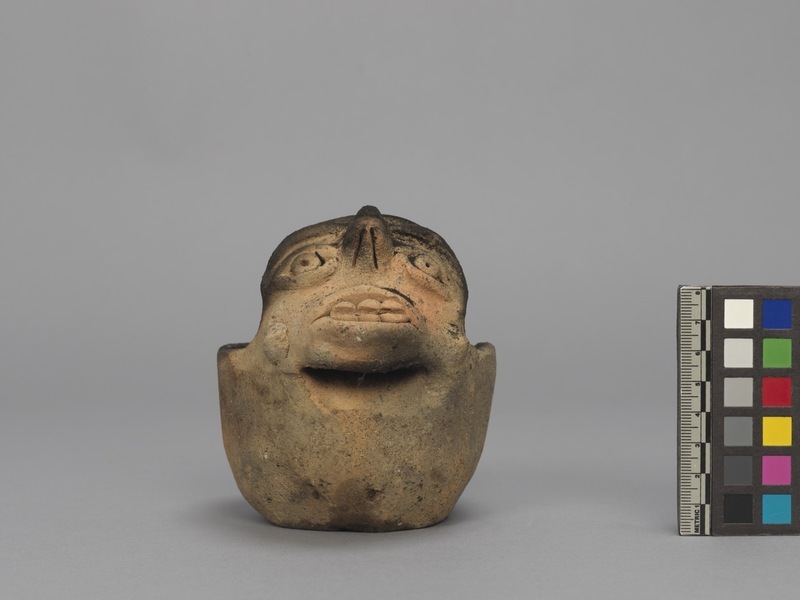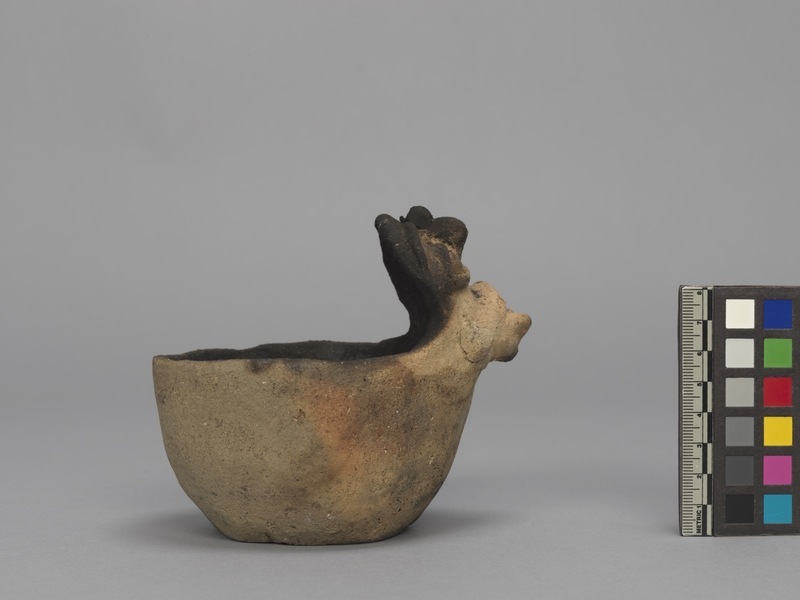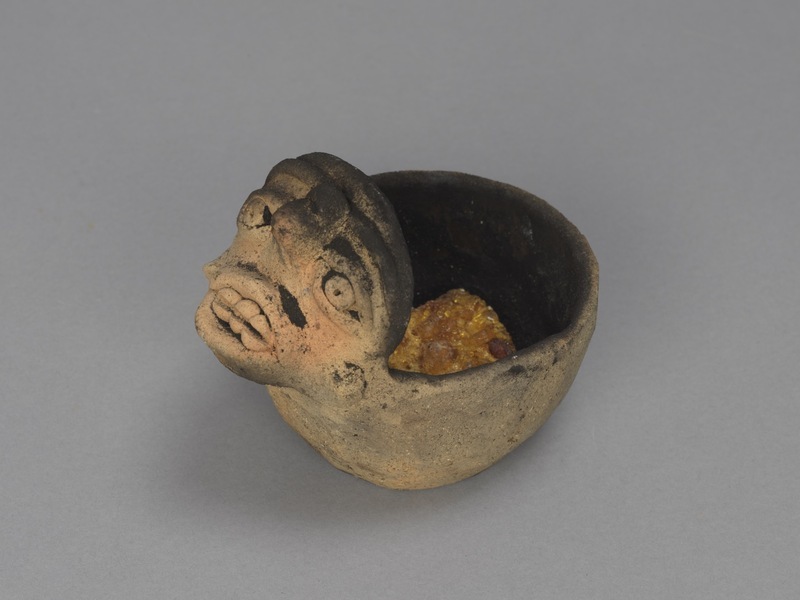Incense Burner Item Number: 3289/86 from the MOA: University of British Columbia




Description
Used incense burner made from hand-molded clay. The inside of the bowl is black from use - burning a resin called 'pom'. The front of the incensario is molded with face baring its teeth, which extends up and back over the bowl. There is a piece of unused pom inside the burner.
History Of Use
The burner represents the god K’ak, the God of fire. In Lacandon Maya, these incensarios are known as u lak-il k’uh - the god’s plate. It has been posited that the tradition of affixing hand-molded god faces to incense bowls dates to the late Post-Classic. Historically, as recorded by Morley and Tozzer, these burners were used in cave temples, which had their own fires. Diego de Landa records that Maya ceremonies involved extensive offerings and Tozzer, in the very early 20th century, records acts of self-sacrifice (blood auto-sacrifice). These rituals began to be lost in the mid 20th century, in part due to the arrival of new Christian denominations. During the rituals, the spirit of the god descends and sits on the relics placed with the incense burner. The gods are also present in their houses (the cave temples), in the jungle and in the burners themselves. K’uh refers to both the burner and the gods. Rituals are either primicias (agricultural rituals) or derive from the needs of the moment (e.g., healing).
Narrative
This burner belonged to Chankin Tercero, a ritual specialist the grandson of the Chankin who worked with Alfred Tozzer. It was sold to the museum by Alfonso Tercero Nuc, his son. The Lacandon rainforest stretches through the Southern Mexican states of Chiapas and Yuacatan, as well as the northern part of Guatemala and is one of the most biodiverse regions of Central America. This jungle is home to communities of Maya speakers known as the Lacandon Maya, who support themselves through “agro-forestry”, a system built on sustainable crop rotation. The Lacandon forest contains over 1,500 tree species and is one of the last forested areas large enough to support jaguars, an animal sacred to the contemporary Lacandon, as well as to ancient Maya peoples. The Lacandones live near ancient Maya archaeological sites such as Bonampak and Yaxchilan. These sites were known to and frequented by the Lacandon people before their discovery by Europeans. The Lacandon peoples are no longer permitted to use these sites for ritual purposes. However, Lacandon ceremonies, centred around agricultural petitions, offerings and spiritual healing continue to take place in the forest, conducted by ritual specialists. Specialists traditionally wear bark cloth tunics for these ceremonies. This information was provided in part from Chankin Tercero before his death in July 2017 and also from his wife, Margarita Nuc and son, Alfonso Tercero Nuc. The family continue to practice ancestral rituals and make ancestral ritual art.
Item History
- Made by Chankin Tercero (Maker) in Chiapas, Mexico during 2000
- Collected by Laura Osorio between 2017 and 2018
- Owned by Laura Osorio before April 11, 2018
- Received from Laura Osorio (Seller), Museum of Anthropology Exhibitions Budget (Funding source) and Michael O'Brian Family Foundation (Funding source) on April 11, 2018
What
Who
- Culture
- Maya: Lacandon
- Creator
- Chankin Tercero (Maker)
- Field Collector
- Laura Osorio
- Previous Owner
- Laura Osorio
- Received from
- Laura Osorio (Seller), Museum of Anthropology Exhibitions Budget (Funding source) and Michael O'Brian Family Foundation (Funding source)
Where
- Holding Institution
- MOA: University of British Columbia
- Made in
- Chiapas, Mexico
When
- Creation Date
- during 2000
- Collection Date
- between 2017 and 2018
- Ownership Date
- before April 11, 2018
- Acquisition Date
- on April 11, 2018
Other
- Item Classes
- ceramics
- Condition
- good
- Accession Number
- 3289/0086